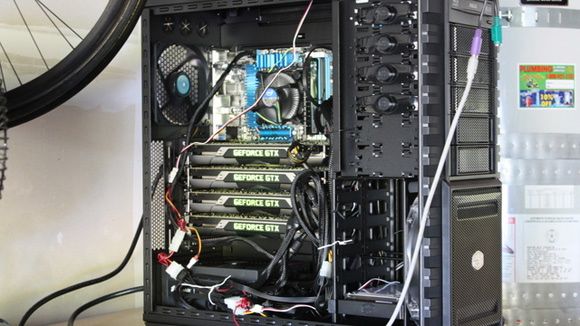Nvidia GPUs help Pi researcher calculate eight-quadrillionth place
Researcher breaks record using Nvidia graphics cards

The one thing more numerous than all the Pi day jokes on 3/14 were the digits to the right of the decimal place for the celebrated mathematical constant.
Now there are even more digits, up to the eight-quadrillionth place, thanks to one Santa Clara University researcher who used 26 computers and 30 Nvidia graphics cards to accomplish the feat.
"To celebrate the 2013 Pi day, I'd like to announce a new record: the eight quadrillionth bit of Pi is 0!" announced researcher Ed Karrels in a blog post.
Karrels noted that it took 35 days to target the 2,000,000,000,000,000th digit of Pi in his first runthrough, then 26 days to target the 2,000,000,000,000,008th digit and to double-check his work.
The crafty researcher was able to use a newer version of a compiler programming tools to speed up the second run.
Too tough for CPUs, switching to GPUs
Karrels divulged the unique way in which he arrived at that record-breaking Pi calculation.
"All the computations were done on graphics cards rather than on regular CPUs," he revealed.
Get daily insight, inspiration and deals in your inbox
Sign up for breaking news, reviews, opinion, top tech deals, and more.
He spread the calculations across one computer with four Nvidia GTX 690 graphics cards, two Nvidia GTX 680 graphics cards, and 24 computers with one GTX 570 graphics cards each.
The 24 computers were thanks to Santa Clara University Design Center, said Karrels in his blog, giving credit to the school.
The previous record for calculating Pi was held by a team at Yahoo!, which took 23 days to compute the famous irrational number to the two-quadrillionth place.
However, unlike Karrels, Yahoo! needed a cluster of 1,000 CPU-only computers to get the job done, according to Nvidia.
More Pi, please
In addition to the eight new Pi digits, Karrels said that he has 17 more digits for a total of 25.
However, the researcher isn't revealing the remaining pieces of Pi just yet.
"That way, if and when someone else extends this result, I can help verify that they really did get accurate results in their computation."
You can pester Karrels for the rest of the Pi digits on Tuesday during the GPU Technology Conference in San Jose, Calif.
There, he'll explain the math behind his achievement, programming tricks he used to speed up the process, and logistics of doing supercomputing on a budget.
His lecture is aptly titled "Computing the Quadrillionth Digit of Pi: A Supercomputer in the Garage."
